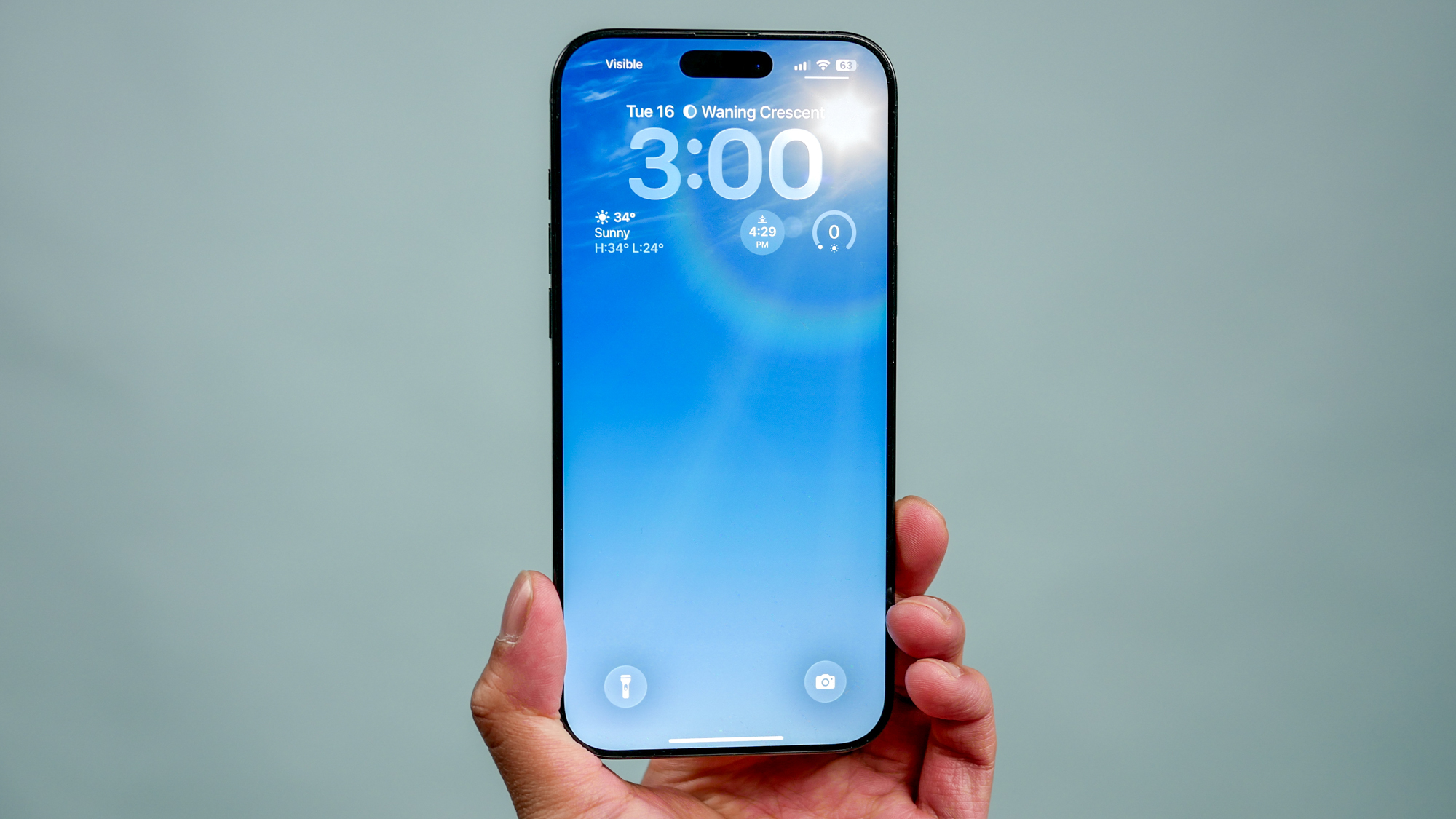Innerspring vs pocket coil mattresses: which one is better for your sleep?
Learn all about the two common types of spring mattresses and how choosing the right one can improve your sleep
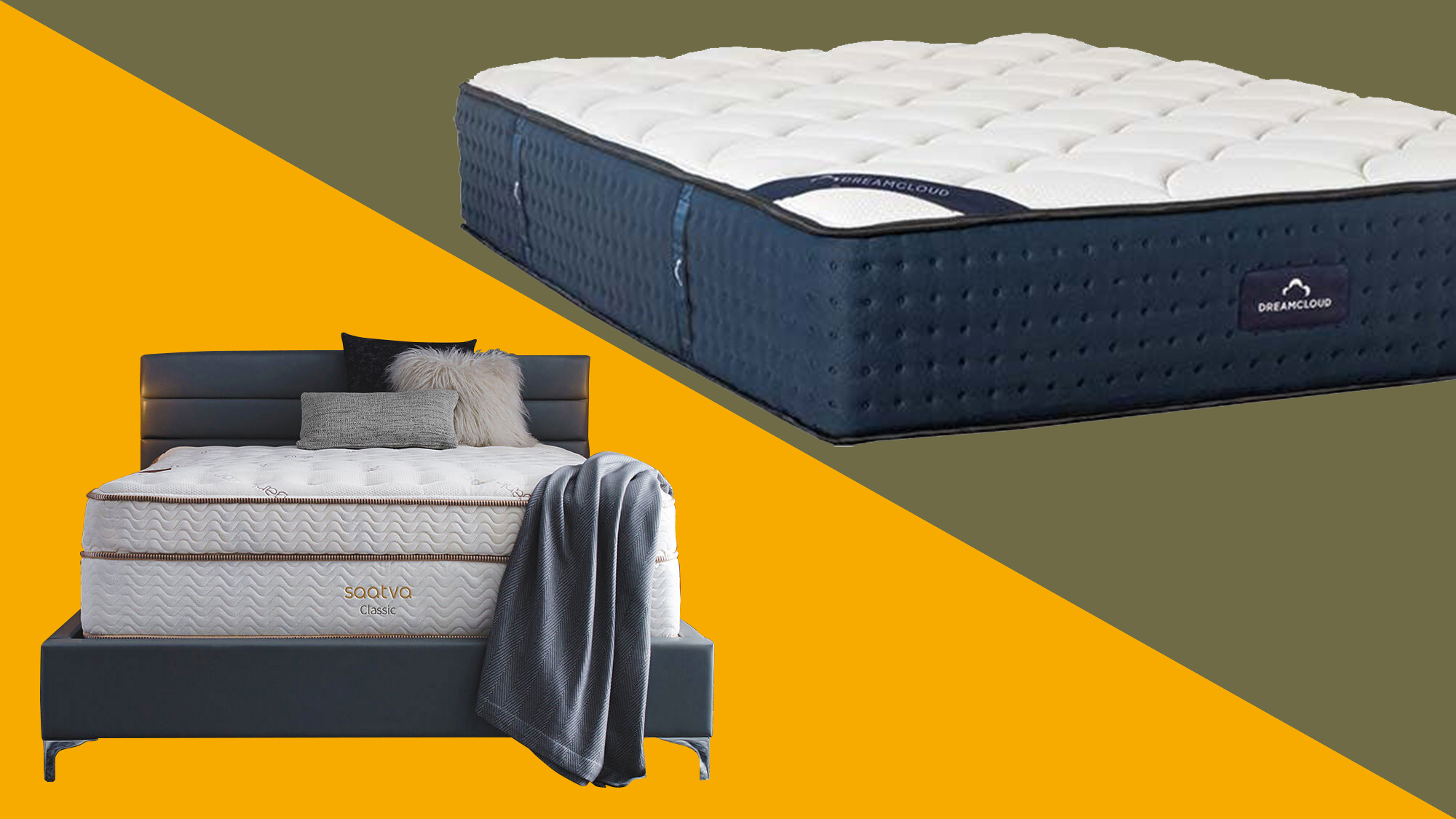
Your mattress has a bigger impact on your sleep quality than you might think. Many of the top recommendations in our best mattress guide use springs — either innerspring or pocket coils — to deliver a balance of comfort and support. But what are the major differences between the two, so which one should you pick for your sleeping style?
There are various factors that can influence your decision to choose one type of mattress over the other. If you're torn between an innerspring or pocket coil mattress in particular, this explainer article will help you make an informed decision by simplifying all the facts.
And what's more? Once you've made a final choice, explore our mattress sales to earn great savings on your dream bed. But first, let's start with the basics...
What is an innerspring mattress?
Innerspring mattresses are a classic— many of us grew up sleeping on them. They have been around for decades and remain one of the most affordable and widely available mattress types.
At the base is a layer of springs, known as a pack. These are metal coils with an hourglass shape, usually Bonnell or offset coils. Some innerspring mattresses use continuous coils, made from a single wire woven into a loose row of springs.
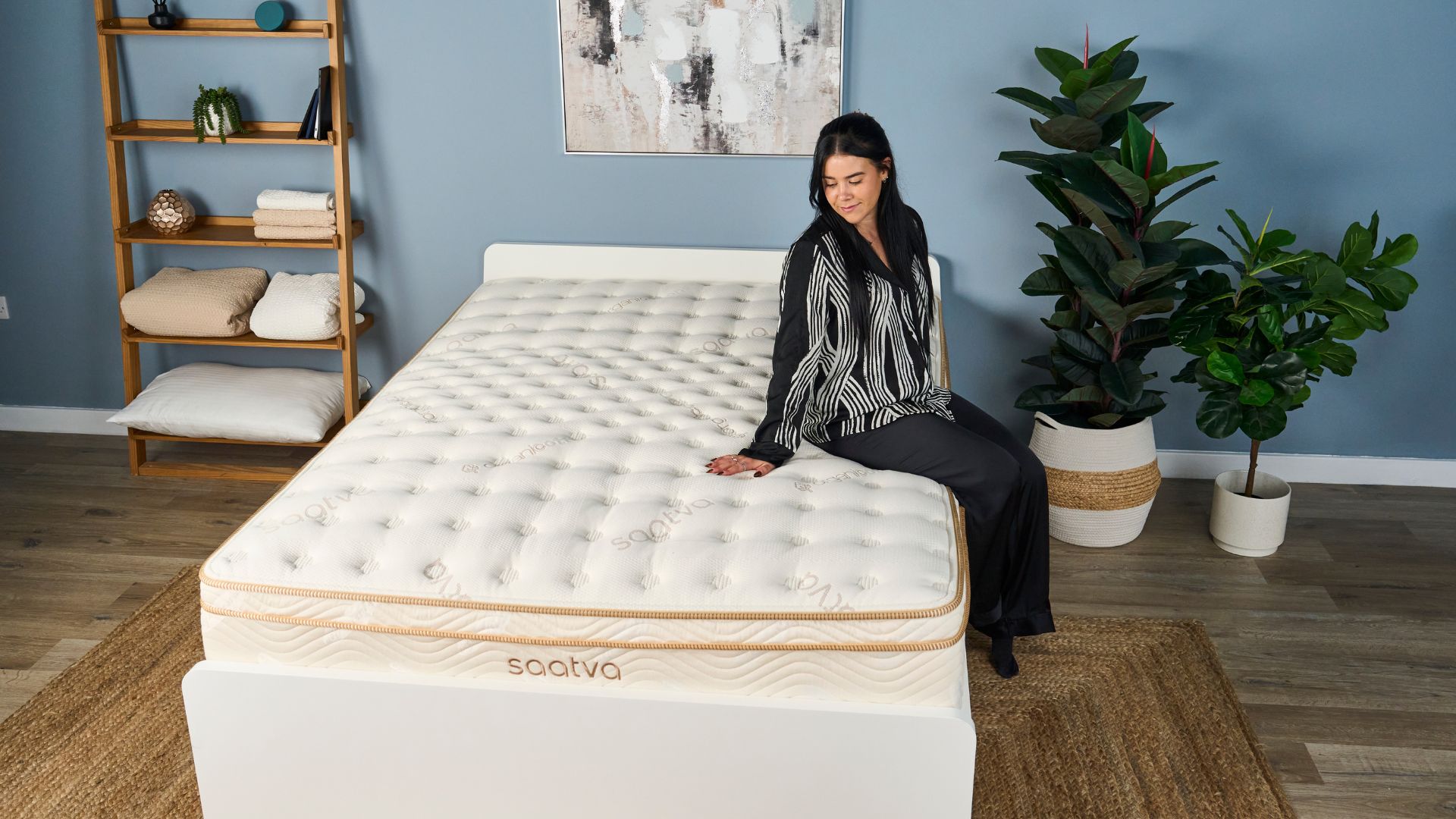
Above this coil base sits a comfort layer — usually foam, wool, or fiberfill. Many innerspring beds also feature a pillow top or quilted layer, giving you extra cushioning, breathability, and contouring. Luxury innerspring mattresses such as the Saatva Classic Mattress and the Stearns & Foster Estate Mattress contain more comfort layers and / or coils for extra contouring and comfort.
The pros and cons of innerspring mattresses
As with all mattress types, innerspring mattresses have their benefits and drawbacks. Let’s look at the major pros and cons:
Get instant access to breaking news, the hottest reviews, great deals and helpful tips.
Pros of innerspring mattresses
- Extremely supportive with excellent edge support
- Evenly distributes body weight across the surface
- Higher-end models often offer multi-zone support
- Ideal for back and stomach sleepers
- Can help with hip and back pain
- Breathable (though not on the level of the best cooling mattresses)
Cons of innerspring mattresses
- Tend to have high motion transfer, so not great for couples
- Can be too firm for side sleepers or lighter bodies
- Usually noisy and creaky, and springs are prone to breaking
- Lacks ample contouring, as found in the best mattresses for side sleepers
What is a pocket coil mattress?
Pocket coil mattresses (also called pocket sprung beds) use individually wrapped coils. Each spring is encased in its own fabric pocket that moves independently for customized support.
This results in better motion isolation — great news for restless sleepers or those looking for the best mattresses for couples. Pocket coil mattresses also make up a bulk of our best hybrid mattress choices.
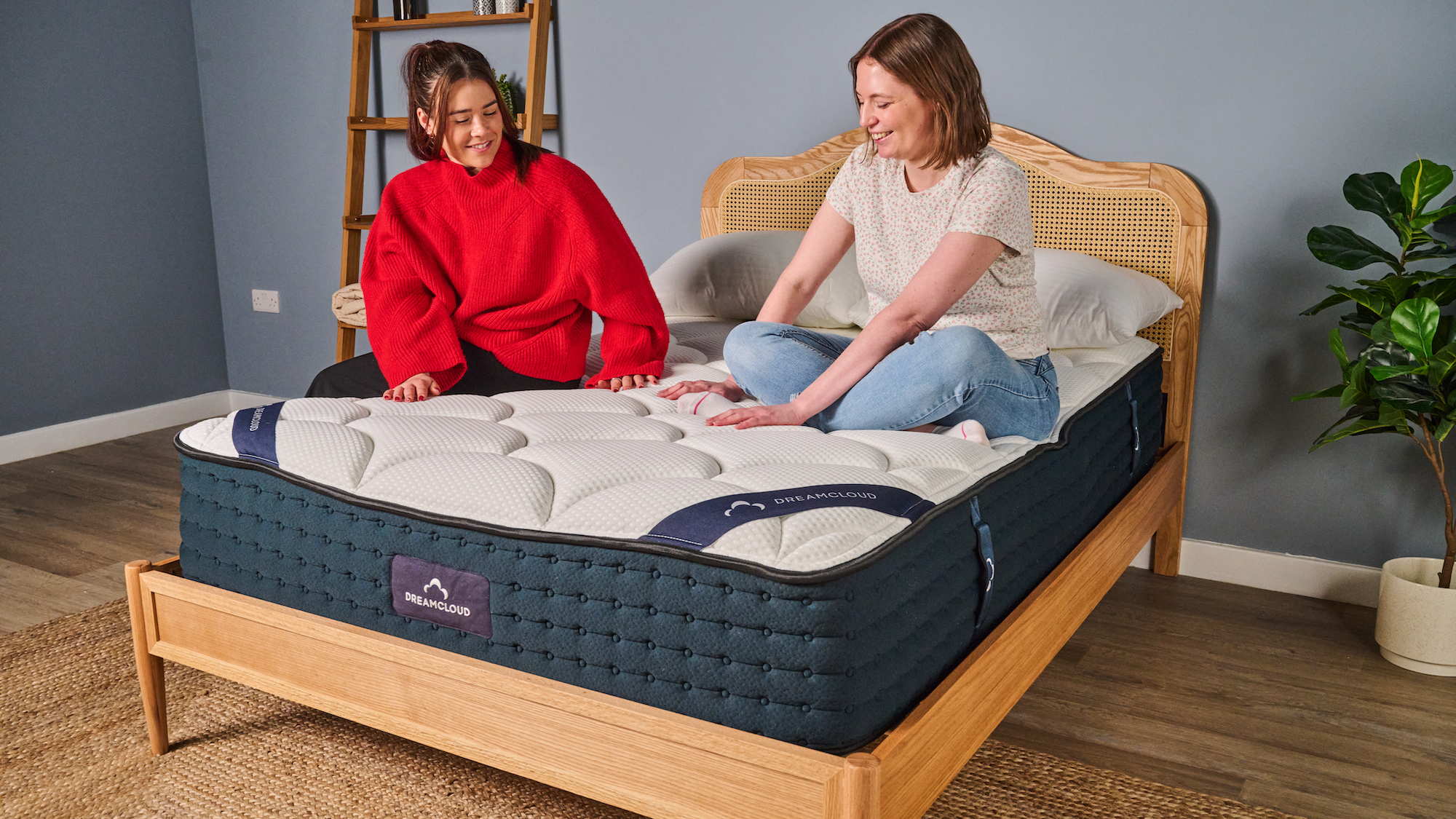
Pocket coil mattresses consist of a diverse range of materials. Most designs feature a breathable cover, at least one comfort layer (memory foam, wool, or latex), and a transition layer that leads into the support core of pocketed springs, with a durable base for stability.
You’ll find plenty of pocket coil mattresses on the market. Some of the best ones we've tested include the DreamCloud Mattress, the Helix Midnight Luxe Mattress.
The pros and cons of pocket coil mattresses
As with innerspring mattresses, pocket coil mattresses also have their pluses and minuses...
Pros of pocket coil mattresses
- Excellent motion isolation and high responsiveness
- Promotes good spinal alignment
- Zoned support from the coils
- Great for back, side, stomach and combination sleepers
- Excellent pressure relief to relieve aches and pains
Cons of pocket coil mattresses
- Can trap heat as each spring is wrapped in material
- Could contain fibers that aggravate allergies
- Not supportive enough for sleepers over 250lbs
- Lack of contouring
Notably, pocket coil cooling mattresses are designed with specialist materials to prevent overheating. The Bear Elite Hybrid is our top-rated cooling mattress.
Innerspring vs pocket coil mattresses: Different types of coils
As we mentioned above, innerspring coils are interconnected or continuous, whereas pocketed coils are individually wrapped in pockets of fabric. However, there are different types of mattress coils within each category. Below are some of the most common...
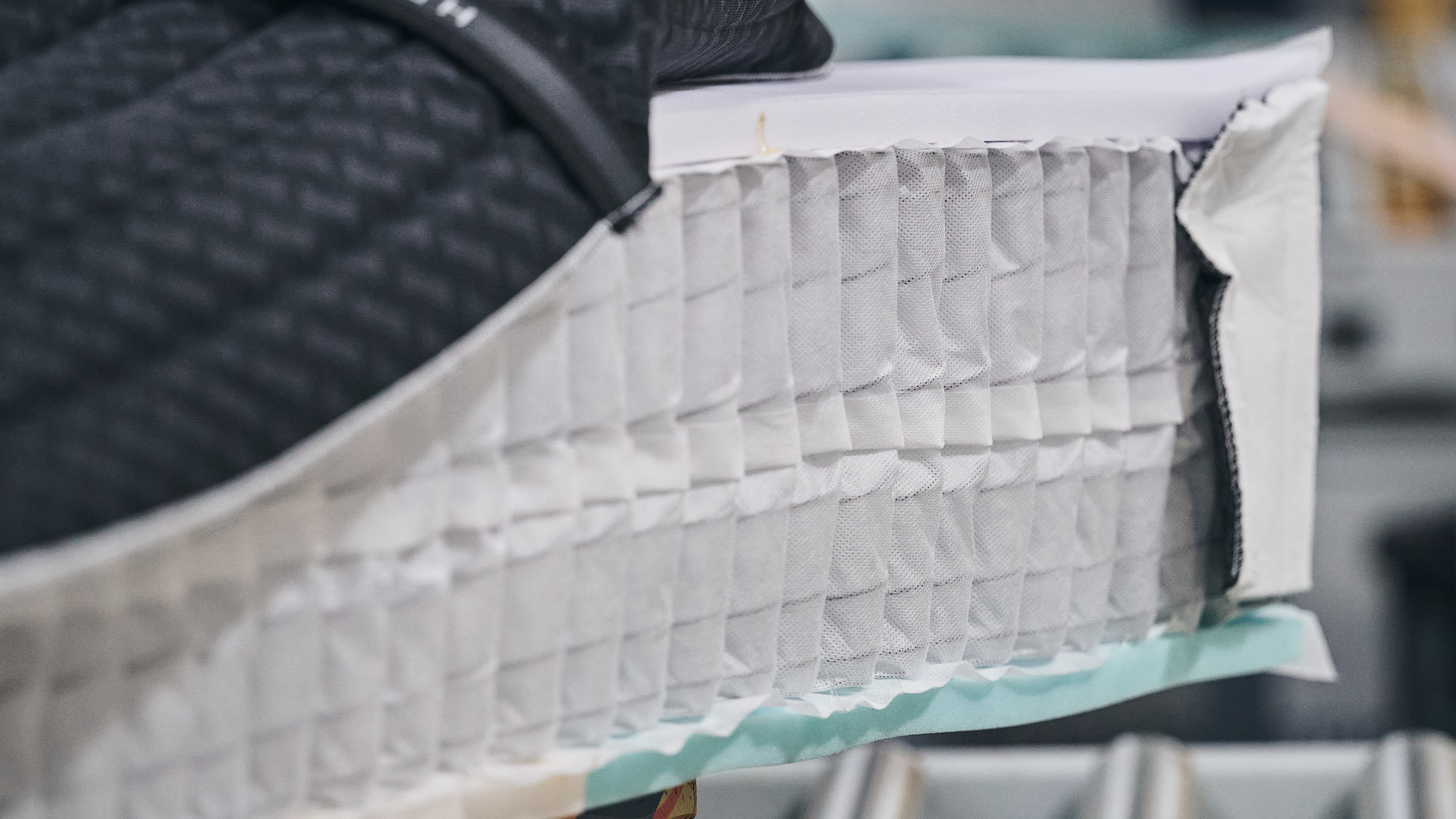
Bonnell coils
Bonnell coils are wider on the top and bottom than in the middle, with the thinner portion designed to flex in response to light pressure and the thicker portions to stand up to greater pressure. Each coil is interconnected to the next with thin spiral-shaped helical wires, meaning they move as a single unit.
Offset coils
These are an updated version of Bonnell coils, with squared sides that allow them to flex like a hinge under lighter pressure and provide a tougher resistance against increased pressure. They help cut down on motion transfer and are quieter than Bonnell coils.
Continuous wire coils
These are made using a single wire to form lots of loose coils connected by helical wires. Continuous wire coils are durable and cheap, but don’t provide contouring.
Pocketed coils
Multiple smaller coils are individually wrapped in fabric so that each can move on its own. This means each coil only moves when pressure is placed directly on it, helping it contour to the body and respond to movement without creating motion transfer.
Microcoils
Microcoils (also known as minicoils) are also individually wrapped and are commonly used in transitional layers to respond to pressure, provide contouring, and promote airflow. Microcoils are between one and four inches, although some mattresses also have nanocoils, which measure less than one inch.
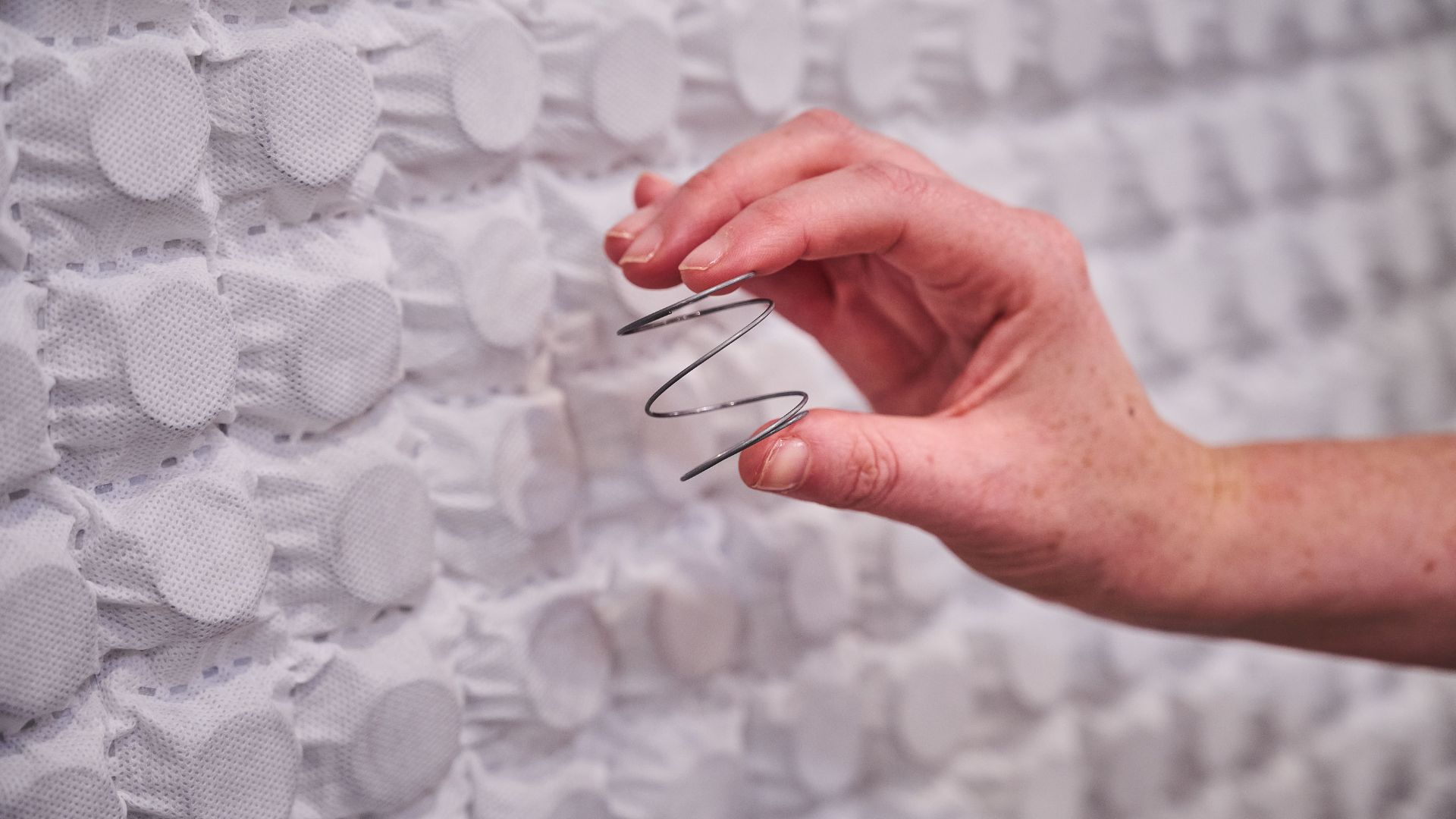
Innerspring vs pocket coil mattresses: Which should you buy?
While innerspring and pocket coil mattresses share some similarities, each offers a distinct sleep experience.
If you prefer a traditional bouncy feel, go for an innerspring mattress — just beware that it can be noisier, less durable, and a bit too springy for some. Handcrafted versions, like the Saatva Classic, are made to stand the test of time, but due to the superior build, they also come with a premium price tag.
For reliable (and quieter) support with a touch of bounce, go for a pocket coil mattress. These can often cost less than traditional innersprings and provide more motion control, though they often lack the deep contouring of the best memory foam mattresses.
Whichever type you opt for, don't forget to look for a sleep trial of at least 30 nights to give your body enough time to adjust.

Becky is a Sleep Staff Writer at Tom’s Guide covering all things sleep-related including product reviews, research studies, news and explainers. She works on specialist bedding content and is responsible for buyer’s guides like the best pillows for all sleepers and best mattress protectors focusing on popular brands such as Tempur-Pedic, Avocado, Coop Home Goods and more. Becky is a PPA accredited journalist who is keen to explore the intricacies of sleep, its effects on skincare, mental wellbeing and work performance. While not thinking of sleep, she can be seen reading in cosy bookshops or learning about global food culture.
- Jo PlumridgeMattress tester and sleep writer
You must confirm your public display name before commenting
Please logout and then login again, you will then be prompted to enter your display name.
